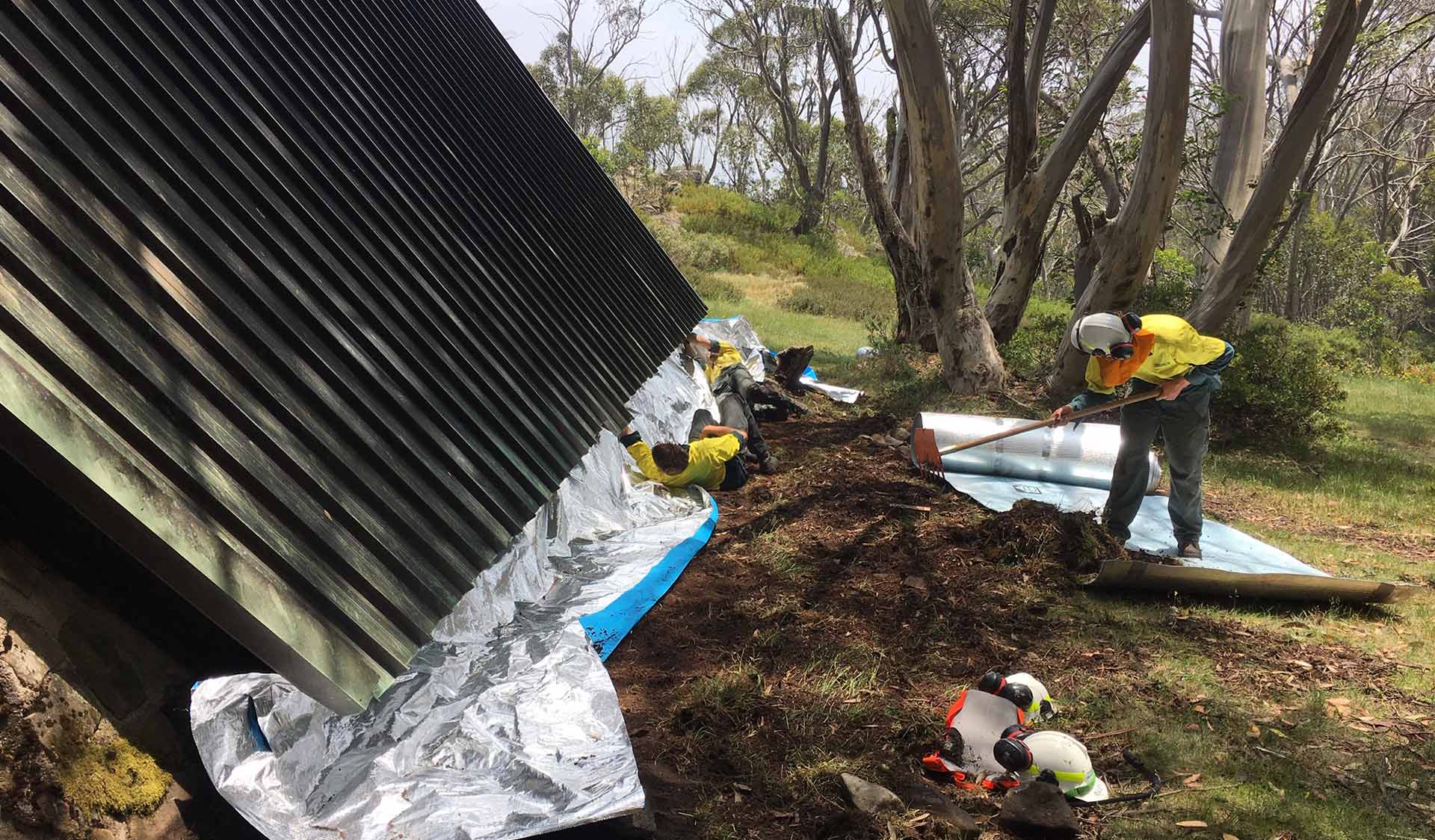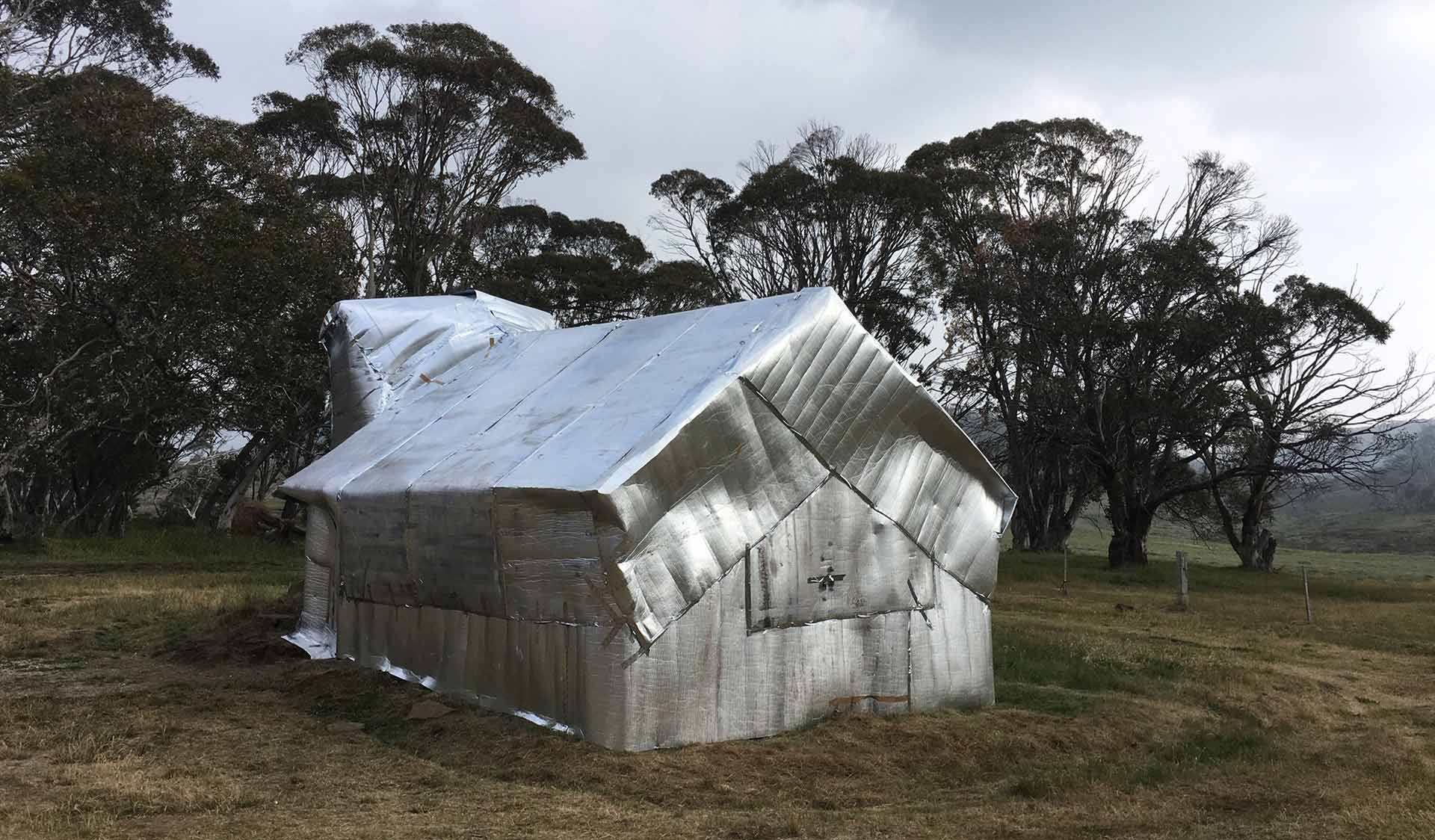Protecting huts in the high country
Thursday 13 February, 2020
Scattered throughout Victoria’s alpine region are hundreds of historic huts built by a wide variety of groups including graziers, prospectors, the Forests Commission, Country Roads Board, utility providers, and recreational users such as ski and hiking groups.
The huts were built to provide shelter and refuge in remote areas with whatever bush materials were at hand or could be carried in, such as corrugated iron.
Over the last twenty years, concerted efforts to restore these huts has been made thanks to the Victorian High Country Huts Association (VHCHA) and the incredible volunteers.
Given their location among the forested areas of the alps, protecting these high-country huts from the current bushfires has been a challenge for Parks Victoria rangers, Forest Fire Management Victoria firefighters and the Victorian High Country Huts Association.

Parks Victoria staff working as part of Forest Fire Management Victoria fire crews used hand tools to remove flammable grass and bark from the ground around huts located in the Alpine National Park.
And for extra protection, the Howitt, Gantner, Cope, and JB Plain huts were covered in a unique Kevlar and foil wrap called Firezat. A special tape material is used to join the foil wrap sheets together. The foil helps prevent embers from sneaking in through the cracks and setting fire to the huts.

Wrapping was done by Forest Fire Management Victoria crews and teams of soldiers from the Australian Defence Force. A big thank you to all the Forest Fire Management Victoria crews, ADF personnel, and volunteers from the Victoria High Country Huts association who are helping to protect Victoria’s high-country heritage.
Alpine National Park stretches from central Gippsland all the way to the New South Wales border where it adjoins Kosciuszko National Park. Within the park are some of Australia’s most stunning alpine landscapes, including mountain peaks, escarpments and grassy high plains. It is part of an Aboriginal cultural landscape that includes traditional Country of the Taungurung and Gunaikurnai Peoples.

